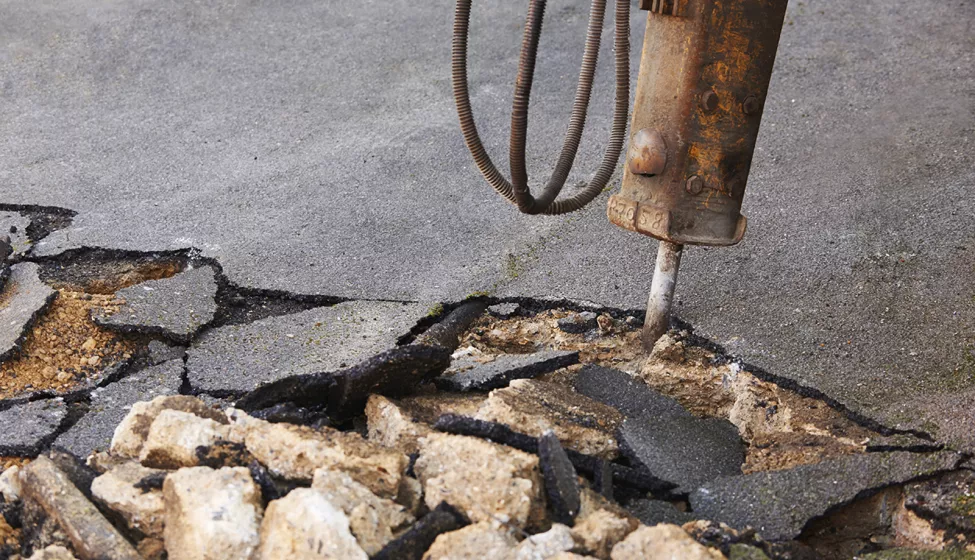March 19, 2019
Unwanted sound and vibration can be destabilizing influences that affect a wide variety of industries — from consumer electronics and automobiles to costly industrial equipment. Vibration can simply cause discomfort to a vehicle passenger, system operator, or end user, or, at the other end of the spectrum, even lead to catastrophic failure. Drivetrain systems can fracture. Anti-lock braking systems can fail. Heavy machinery can move off a foundation and spew hazardous chemicals or gases.
Manufacturers who proactively conduct sound and vibration analyses can help ensure that a design released into service offers the best possible performance.
Abnormal levels of vibration and noise can be early indicators of an internal problem, such as imbalance, angular or parallel misalignment, or wear or looseness of roller bearings, drive belts, or gears. If left unchecked, excess vibration can cause additional, even irreparable damage. Quickly identifying and eliminating the cause of unwanted vibrations can help manufacturers avoid a range of downstream repercussions, including negative consumer reviews, operator disruption, costly product repairs or redesigns, and bodily injury.
Comprehensive sound and vibration analysis can help manufacturers proactively prevent hazardous levels of sound and vibration and reactively evaluate the root cause of a product or system failure. Manufacturers who proactively conduct sound and vibration analyses can help ensure that a design released into service offers the best possible performance.
One important example is front-end design guidance for life testing products. Our team at Exponent instruments a product or system and gathers sound inputs using a range of equipment — from meters that record straightforward sound pressure level measurements to sophisticated instruments that can identify amplitude and frequency content of sounds with a variety of weighting systems while recording audio simultaneously. We collect vibration data using a selection of specialty accelerometers that can accommodate high frequency measurement (up to 20 kHz), low mass loading, and mounting methods for high-temperature surfaces.
Once sound and vibration data are collected, our team can use the data for a variety of analyses, including identification of inputs that should be used for life testing (e.g., determining the expected life cycle of the product and early modes of failure). Manufacturers can leverage these insights to adjust product design or manage consumer expectations regarding product performance in the field. While this effort requires some investment up front, proactive analyses can often help manufacturers avoid the costs of unexpected failures.
Manufacturers can also leverage sound and vibration analyses to determine the root cause of a failure in the field. Exponent often performs root cause analyses to identify the factors that contributed to a vehicle accident or failure of costly capital equipment. These analyses can be useful for litigation support, potential recalls, or for identifying contributing factors to prevent the situation from reoccurring in similar pieces of equipment or machinery. Exponent has performed sound and vibration measurements for litigation support to affirm or refute witness statements or hypotheses about the cause of accidents.
Additionally, Exponent has performed product testing to evaluate the advertised benefits or features of products. For example, Exponent recently conducted testing on a consumer product intended for infants. Exponent took sound measurements to determine the amplitude and frequency of sounds that would be experienced at the infant's location to evaluate the degree of similarity between the product and a natural location. A comparison of literature results from the location and Exponent's measurements confirmed that the product did indeed perform as intended, and the client was able to use Exponent's data to show their product's superior performance.
Another recent example involved a commercial vehicle manufacturer who was prevented from making a delivery of over fifty vehicles due to an unusual noise and vibration that its customer found unacceptable. The manufacturer had consulted with its component suppliers but had been unable to identify the issue. Our team instrumented the drivetrain components using magnetically mounted accelerometers and reviewed the data in real time to identify the component that was behaving abnormally, represented as periodic impacting, and that was likely responsible for the noise. Replacing that single component eliminated the unwanted vibration and resulting noise, and the customer was ultimately able to use these data to show the component manufacturer that the component needed to be improved.
While the process of taking a sound measurement or placing an accelerometer on an item may not initially seem complex, certified specialists consider several factors to obtain accurate and repeatable results. Sound and vibration are dependent on test conditions. Temperature variations, weather conditions, the amount of ambient noise present, the directionality of the microphone, and the distance of the microphone from what one is testing are critical variables that can impact the results of sound analyses. Similarly, obtaining an accurate vibration reading depends on a multitude of factors, including but not limited to how the cabling is secured, how the accelerometer is mounted to the structure, whether the accelerometer is the appropriate size and sensitivity, and whether the inputs are coming from the appropriate excitation source.
How Exponent Can Help
Exponent's multidisciplinary team of certified vibration analysts, mechanical engineers, human factors experts, and health and safety experts have the depth and breadth of expertise necessary to collect and interpret meaningful sound and vibration data that help manufacturers optimize the safety and performance of their products and systems.

